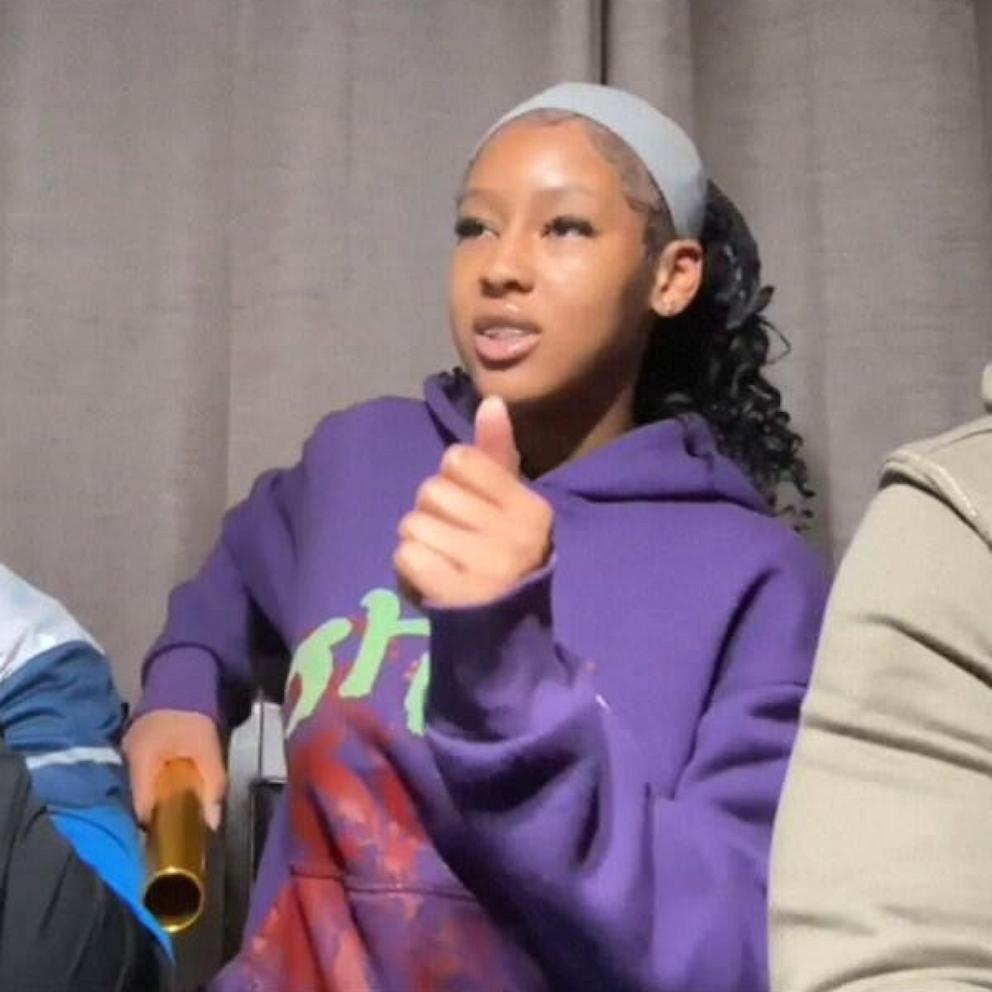Sarah Palin granted new trial in defamation lawsuit against New York Times
A federal appeals court on Wednesday revived Sarah Palin's defamation lawsuit against The New York Times, finding several major issues "impugn the reliability" of the original outcome.
The Second U.S. Circuit Court of Appeals faulted the trial judge for dismissing the case before the jury had reached a verdict. The jury was allowed to continue deliberating before ultimately finding the newspaper not liable in February 2022.
"Unfortunately, several major issues at trial -- specifically, the erroneous exclusion of evidence, an inaccurate jury instruction, a legally erroneous response to a mid-deliberation jury question, and jurors learning during deliberations of the district court's Rule 50 dismissal ruling -- impugn the reliability of that verdict," the opinion said.

Shane Vogt, a lawyer for Palin, said in a statement: "Governor Palin is very happy with today's decision, which is a significant step forward in the process of holding publishers accountable for content that misleads readers and the public in general. The truth deserves a level playing field, and Governor Palin looks forward to presenting her case to a jury that is 'provided with relevant proffered evidence and properly instructed on the law' as set forth in the Second Circuit Court of Appeals' opinion."
Palin sued the Times and its former opinion editor, James Bennet, over an editorial published on June 14, 2017. The piece, entitled "America's Lethal Politics," linked the 2011 shooting of former Congresswoman Gabrielle Giffords to a digital graphic of a crosshairs over Democratic congressional districts published in March 2010 by Palin's political action committee. A relationship between the crosshairs map and the shooting was never established. Rather, at the time of the editorial, the attack was widely viewed as a result of the shooter's mental illness.
Palin's original defamation lawsuit was dismissed but, in 2019, the Second Circuit vacated the dismissal. The case went to trial in 2022. Judge Jed Rakoff granted the Times' motion for a directed verdict days before the jury found the newspaper was not liable for defaming Palin.
In its opinion on Wednesday, the appeals court agreed with Palin that Rakoff "erroneously disregarded or discredited her evidence of actual malice and improperly substituted its own judgment for that of the jury."
The New York Times told ABC News in a statement Wednesday: "This decision is disappointing. We're confident we will prevail in a retrial."
Rakoff said at the time that he would set aside the verdict and dismiss the lawsuit because Palin had not met the high standard of showing the Times had acted with "actual malice" when it published an editorial that erroneously linked Palin's political action committee to a mass shooting.
Palin sued the Times in 2017, roughly nine years after she was tapped to be Sen. John McCain's GOP vice presidential nominee, claiming the newspaper deliberately ruined her burgeoning career as a political commentator and consultant by publishing an erroneous editorial she said defamed her.
The editorial that prompted the lawsuit was published on the same day a gunman opened fire on GOP politicians practicing for a congressional charity baseball game in a Washington, D.C., suburb, injuring six, including Republican Rep. Steve Scalise.

The Times' editorial board wrote that prior to the 2011 Arizona mass shooting that killed six people and left Giffords with a traumatic brain injury, Palin's political action committee had fueled a violent atmosphere by circulating a map that put the electoral districts of Giffords and 19 other Democrats under stylized crosshairs.
Two days later, the Times published a correction saying the editorial had "incorrectly described" the map and "incorrectly stated that a link existed between political rhetoric and the 2011 shooting."
During the trial, Palin, in her testimony, accused the Times of deliberately fabricating information to sully her reputation.
Bennet testified that while he was responsible for the erroneous information in the editorial, it was an honest mistake and that he meant no harm.




